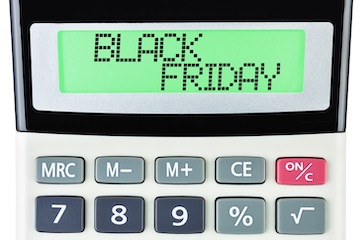The Black Friday weekend is near. Many merchants will lower prices, add promotions, and compete in one of the biggest retail periods of the year. By analyzing prior year results, merchants can estimate current-year sales and profits and the impact of promotions.
Start by reviewing the performance of last year’s offers.
Absolute Increase in Sales = Sales During Promotional Period – (Average Daily Sales before Promotion x Number of Promotional Days)
Promotional Lift = Absolute Increase in Sales ÷ (Average Daily Sales before Promotion x Number of Promotional Days) x 100
For example, say you sold $20,000 on Black Friday last year, and your Average Daily Sales before Promotion was $15,000. Therefore, the Absolute Increase in Sales was $20,000-$15,000 = $5,000. Your Promotional Lift was $5,000 ÷ $15,000 x 100 = 33 percent.
To predict this year’s sales, calculate your Average Daily Sales before Promotion and multiply it by (1+ Promotional Lift). If your Average Daily Sales before Promotion in 2019 was $16,000, your total expected promotional sales would be $16,000 x (1+0.33) = $21,280.
Product Type
The calculation above becomes more sophisticated by predicting sales based on product type or product level. This helps estimate profits as well as sales.
For example, if you normally sell a product for $5 and its cost is $2.50, your net profit is $2.50 per product. If you run a promotion to sell the product at $4.50, your profit is now decreased to $2 per product. To make $20 in total profit, you would sell eight units at the regular price or 10 units at the discounted price.
If you anticipate that sales would increase by 50 percent at the lower price, you could calculate your profit increase. If you normally sell 10 units of the product each day, your Promotional Lift would yield 15 units [10 x (1+.50)]. At a profit of $2 each, your total profit would be $30, an increase of $5.
You can apply the same calculations for overall site deals by using average profit margins, the historical lift on overall sales, or by type of promotion. Perhaps free shipping increased sales by 10 percent, a 20 discount increased sales by 30 percent, and a buy-one-get-one deal increased sales by 10 percent. Knowing those results, you could run the promotion that yielded the most profit.
Remember that some promotions may be unprofitable. Thus, when possible base your predictions on profits and not sales.
Remember that some promotions may be unprofitable.
To be more advanced, you could analyze complementary items and predict the impact of discounting one item on sales of another. For example, does reducing the price of running shoes increase sales of running apparel?
You could also tailor promotions based on customer type. Do loyal, repeat customers respond more to percentage-off discounts or buy-one-get-one offers?
Another consideration is competitors’ pricing. If you know the promotions of competitors, you could model the impact on profits if you replicated those offers. You could also A/B test new promotions.
New businesses, new products, and new promotions may lack historical data. For those, apply the most conservative Promotional Lift from your industry or from your experience to estimate whether promotions are profitable.
Web Traffic
You can use the same Promotional Lift calculation to predict the number of users, sessions, or page views that your site would receive during the Black Friday weekend based on ad spend. Using your typical conversion rate, you could predict sales from traffic spikes. This could help determine if it’s worth spending the money on, say, pay-per-click ads.







